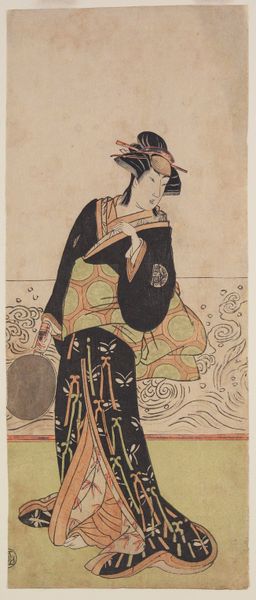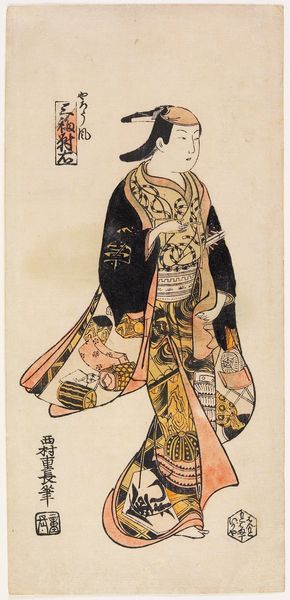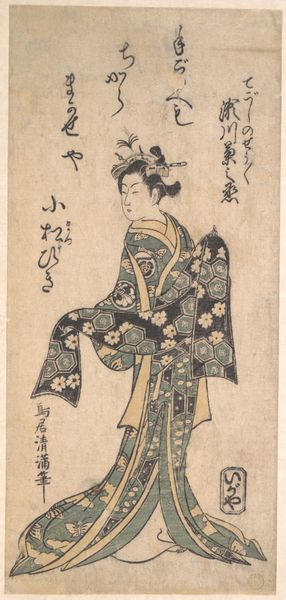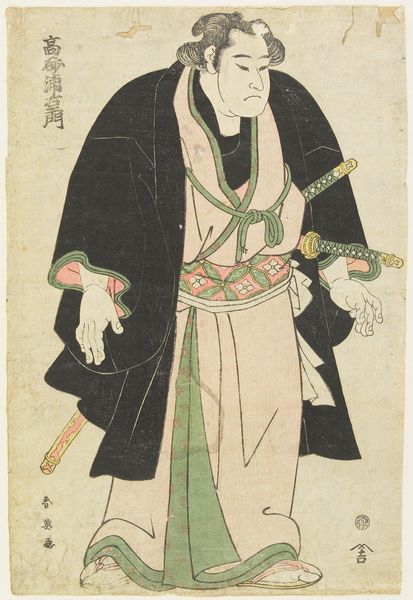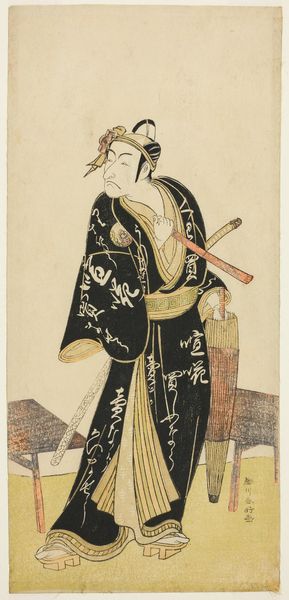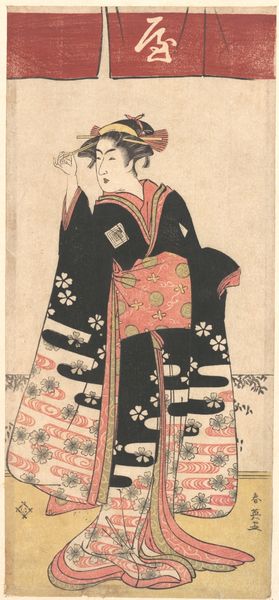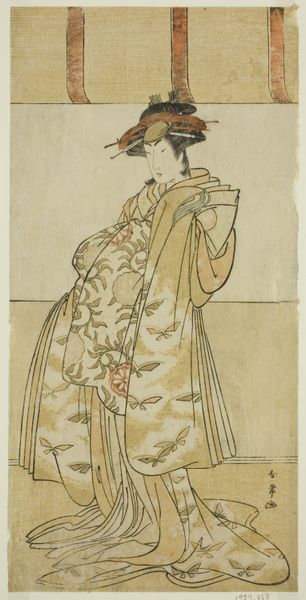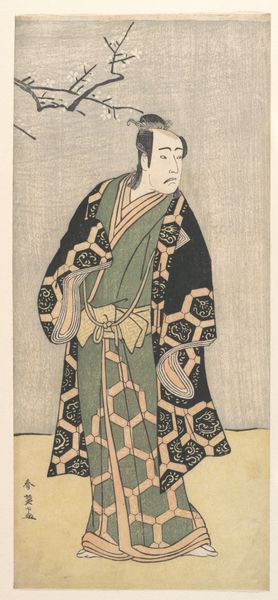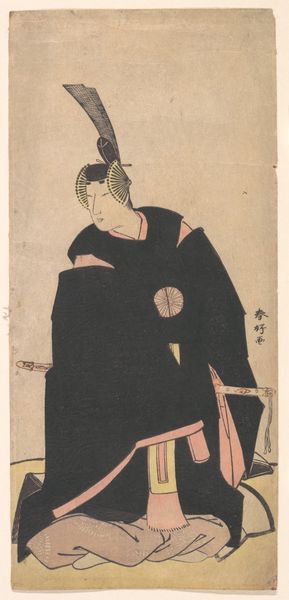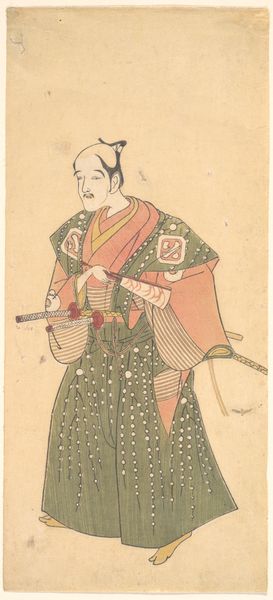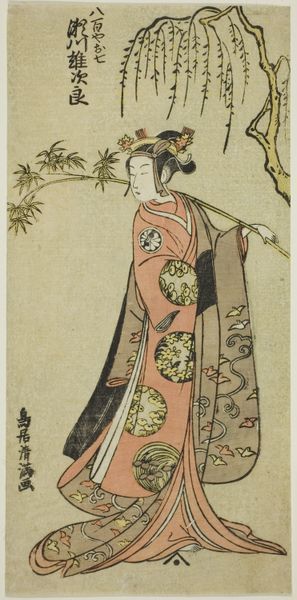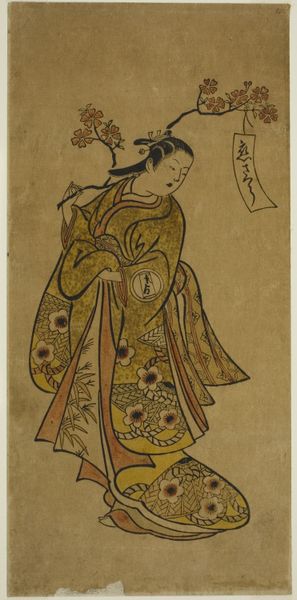
Actor Onoe Matsusuke in a Female Role c. 1760s - 1770s
0:00
0:00
print, ink
#
portrait
# print
#
ukiyo-e
#
japan
#
figuration
#
ink
Dimensions: 11 5/8 × 5 3/8 in. (29.5 × 13.6 cm) (image, sheet, hosoban)
Copyright: Public Domain
Editor: This is "Actor Onoe Matsusuke in a Female Role" by Katsukawa Shunko, created sometime in the 1760s or 70s. It's an ink print, giving it a delicate, almost ephemeral feel. What strikes me is the intricate detail of the garments compared to the more simplified facial features. What stands out to you about it? Curator: Well, I'm immediately drawn to the social and economic context of ukiyo-e prints. These weren't high art for the elite, but a commodity, reflecting the popular culture of Edo-period Japan. Consider the materiality of the print itself – the paper, the woodblocks used for carving, the ink. These are all products of specific labor and trade networks. How do you think the act of mass production influenced the aesthetic choices within this print? Editor: That's interesting. I hadn't really considered the mass production aspect influencing the design itself. Maybe the simplified face allowed for quicker carving of the woodblocks? The clothing patterns, though intricate, seem repetitive, possibly another way to speed up the process. Curator: Precisely! And let’s think about the consumption of these prints. Who was buying them? They were accessible to a wide range of urban dwellers. This image then is advertising both the actor and the fashions of the day. The materials used to produce these objects served more than just aesthetic purposes. They were the engines of cultural diffusion, shaping taste and perpetuating social ideals. Editor: So, it's not just a portrait of an actor, but also a snapshot of the material culture of the time. The ink and paper facilitated the spread of imagery and fashion. That’s really fascinating, to see artmaking embedded within material conditions and labor practices. I hadn’t considered the labour needed to produce this print! Curator: Indeed. By centering the material processes, we understand this ukiyo-e print as part of a broader system of production, consumption, and social representation. We shift away from purely aesthetic contemplation and engage with the vibrant material world that made such art possible.
Comments
No comments
Be the first to comment and join the conversation on the ultimate creative platform.
